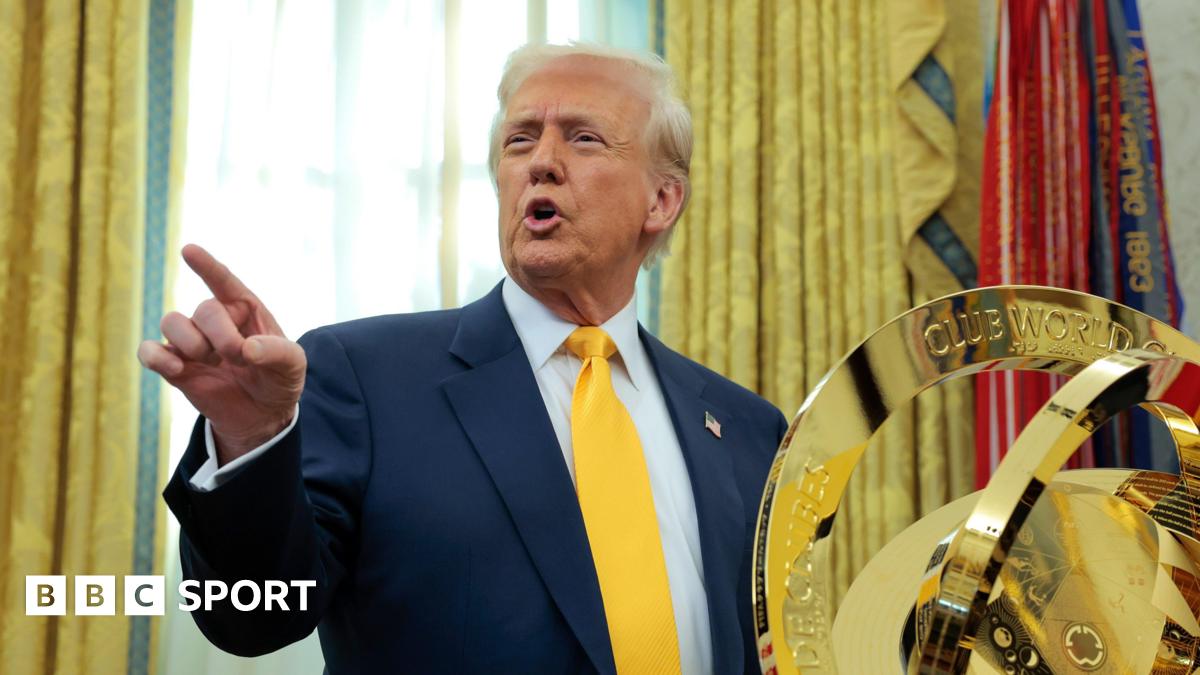Trump's Tariffs: How Sports Feel the Pinch
Donald Trump's trade war, characterized by aggressive tariffs on imported goods, sent shockwaves through the global economy. While many industries felt the impact, the world of sports wasn't immune. From professional leagues to amateur athletes, the ripple effects of these tariffs were significant and far-reaching. This article delves into how Trump's tariffs specifically impacted the sports industry.
The High Cost of Equipment and Apparel:
One of the most immediate consequences was the increased cost of sporting goods. Many athletic apparel and equipment brands rely on overseas manufacturing, particularly in China, to keep production costs low. Trump's tariffs on Chinese imports dramatically increased the price of these goods, impacting both consumers and professional teams.
- Increased prices for consumers: Fans found themselves paying more for everything from jerseys and sneakers to golf clubs and hockey sticks. This price hike, especially noticeable on already expensive professional team merchandise, inevitably dampened consumer spending.
- Higher operational costs for teams: Professional sports teams experienced increased costs for equipment, apparel, and even stadium construction materials, many of which were imported. This squeeze on operational budgets forced teams to make tough choices, potentially impacting player salaries or other areas of their operations.
Impact on International Sporting Events:
The tariffs also complicated the logistics of international sporting events. The increased cost of transportation and imported goods made it more expensive to host and participate in these events.
- Travel expenses: Teams traveling internationally for competitions faced substantially higher airfare and accommodation costs due to fluctuating exchange rates, partially fueled by trade tensions.
- Equipment challenges: Ensuring the timely arrival of specialized equipment for international competitions became a logistical nightmare, adding stress and uncertainty to tournament preparations.
The Impact on Smaller Leagues and Amateur Athletes:
The impact of the tariffs wasn't limited to professional leagues. Smaller leagues and amateur athletes also felt the pinch.
- Reduced accessibility: Higher prices made participation in sports less accessible for many young athletes, particularly those from lower-income families.
- Funding cuts: Amateur sports organizations faced budget constraints, impacting their ability to provide necessary equipment, coaching, and facilities.
Long-Term Effects and Lessons Learned:
The long-term effects of Trump's tariffs on the sports industry are still unfolding. While some argue the tariffs protected domestic industries, the increased costs and economic uncertainty undoubtedly created challenges for many within the sporting world. This period serves as a stark reminder of the interconnectedness of global trade and its potential impact on seemingly disparate sectors.
Looking Ahead:
Understanding the impact of trade policies on sports is crucial for both industry stakeholders and policymakers. Future trade negotiations must consider the potential consequences for all sectors, including the sports industry, ensuring a balance between economic protectionism and the promotion of fair competition and global participation. The experience of the Trump tariffs offers valuable insights for navigating future trade challenges and mitigating their potential negative impacts on the world of sports.
Keywords: Trump tariffs, sports, trade war, economic impact, sporting goods, apparel, equipment, international sports, amateur athletes, professional leagues, consumer prices, global trade.

